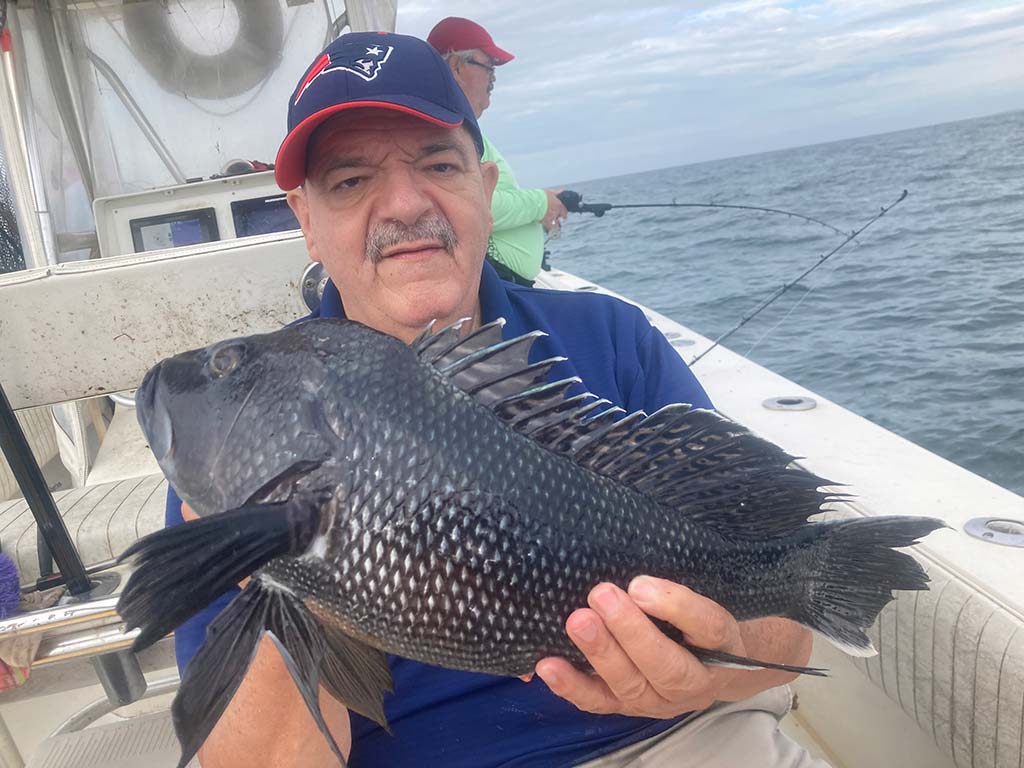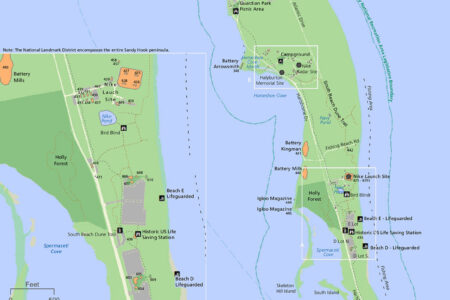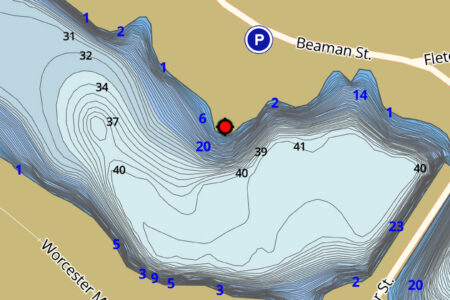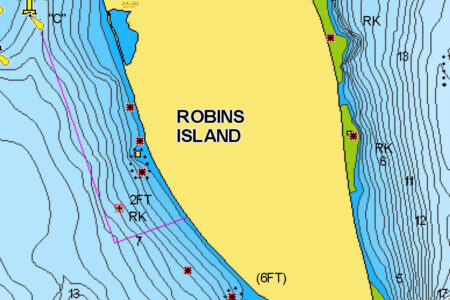
When Dave Anderson asked me if I wanted to write a hotspot story he mentioned that most of them include GPS coordinates. If there ever was a need for such a thing in Westport then we are in big trouble! In July and August of 2021 I conducted an experiment, I vowed to fish a different rock or rockpile every day and it was more than a total success! There are thousands of very large rocks and rockpiles within a few miles of the mouth of the Westport River, and I am sure that most of them rarely get fished.
My summer target for my charters was jumbo sea bass but in the fall I am 100% confident that these rocks and rockpiles be just as productive for blackfish. There are just so many possibilities within a mile of the river and when I run over a spot with my sonar/fishfinder I look for the rocks and jumbles of rocks that sit on high spots in the depths that have been producing recently. When I find a serious-looking target I add a mark on my GPS and then position the boat just on the up-tide side of the structure with either the anchor or the Spot Lock Gizmo I had installed just for this style of fishing.
To give you an idea of just how effective this can be, over this past summer we had full limits of sea bass over 18 inches at least 90% of the time. Also, cod, jumbo scup, summer blackfish, triggerfish and even the occasional fluke all made it into the fish box. On many occasions we also had to “raise the bar” to 20-inch sea bass or better to slow things down in filling out the limit.
I can’t stress enough just how important boat position is when you’re trying to target precise structure. Spot Lock makes this a lot easier, but you can still be precise using an anchor, in fact, I’ve been doing it that way for over 40 years!
Technology changes and I try to learn as new approaches become available so just as going from Loran A to Loran C progressed to our current GPS units that make the job much easier, using Spot Lock is a natural improvement. However, when it’s too windy for the trolling motor I still have to use my anchor and what you do is you position your boat directly over the spot you want to rest on and let your boat drift with the wind until you are 300 to 500 feet downwind. Then follow your GPS Track up wind until you are five times the depth ahead of your target (60 feet of water means 300 ahead of the target). Drop your anchor and pay out line until you are over your mark. Adjust as needed with more or less line.
Note that I use an extra-large anchor for the size of my boat, because I want it to stick where I drop it. Using an inadequate size anchor for the size boat you have and/or for the wind/sea conditions can make this job very challenging. Also, often you may find that you are off by a few feet in one direction or the other and there is a little trick you can do to compensate for that: simply tie the anchor line to a cleat opposite the side that you need the boat to move to. You can get 5% or so of “influence” in the desired direction (300 feet of anchor line at 5% is 15 feet) if you have the cleat positions to make it happen. I always add these strategically placed cleats to any boat I have because it is important for this type of fishing.
See you out there!




